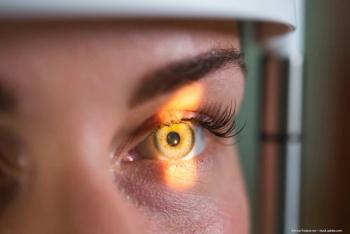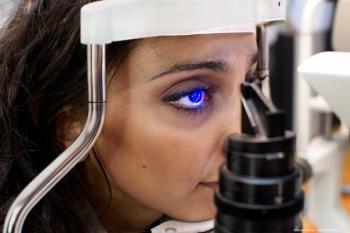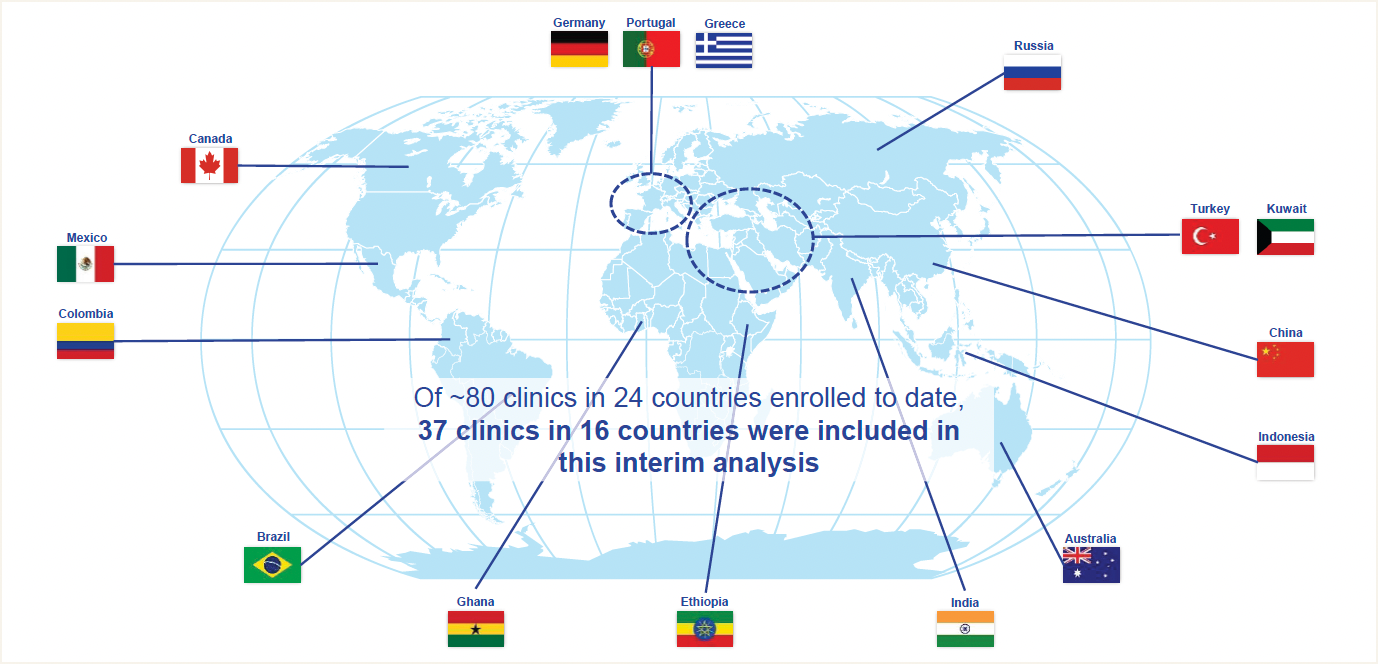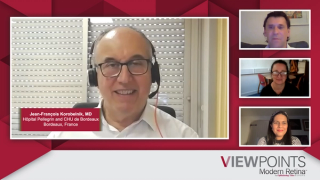
Diabetic Macular Edema
Latest News

Latest Videos

CME Content
More News

Roche’s treatment of faricimab is the first and only FDA-approved medicine targeting two distinct pathways, angiopoietin (Ang)-2 and vascular endothelial growth factor (VEGF)-A, that often cause retinal diseases that may cause visual loss.

Oral APX3330 was found to demonstrate favorable safety and tolerability profile in interim masked safety results, consistent with 11 prior trials of APX3330.

Regeneron announced that the primary endpoints were met in two pivotal trials investigating novel aflibercept 8 mg with 12- and 16-week dosing regimens in patients with diabetic macular edema and wet age-related macular degeneration.

The first stage of the study will evaluate the safety and relative pharmacodynamic effect of different doses of subcutaneously administered D-4517.2 compared to intravitreal injection of aflibercept, an approved therapy, in both wet AMD and DME patients up to 12 weeks.

David A. Eichenbaum, MD, FASRS and Caroline Baumal, MD provide take-home messages to providers treating AMD and DME.

Drs David A. Eichenbaum and Caroline Baumal discuss unmet needs in treating AMD and DME.

Retina specialists discuss how to incorporate faricimab into clinical practice and discuss implacations of the TRUCKEE study.

David A. Eichenbaum, MD, FASRS, and Caroline Baumal, MD, review the dual mechanism of action of faricimab as well as the 2-year update in the TENAYA, LUCERNE, YOSEMITE, and RHINE trials.

Drs David A. Eichenbaum and Caroline Baumal discuss implications of the treat-and-extend approach with faricimab in patients with wet AMD.

Retina specialists discuss which factors impact treatment selection and how to incorporate shared decision-making into treatment selection when treating patients with AMD and DME.

David A. Eichenbaum, MD, FASRS, and Caroline Baumal, MD, discuss how AMD and DME impact a patient’s quality of life.

The investigators retrospectively analyzed treatment-naive eyes with DME which received intravitreal treatment with either ranibizumab 0.5 mg or aflibercept 2 mg. All data were collected in the Fight Retinal Blindness! registry.

This year’s hybrid meeting will allow attendees to participate in person or virtually. Either way, this congress will offer a wealth of information to specialists covering all aspects of retinal diseases.

A retina specialist discusses impressions and key takeaway points from the case of an 81-year-old male with treatment-experienced neovascular age-related macular degeneration (nAMD).

David A. Eichenbaum, MD, FASRS, reviews the case of a 81-year-old female with treatment experienced neovascular age-related macular degeneration (nAMD).

A retina specialist discusses impressions and key takeaway points from the case of a 74-year-old man with diabetic macular edema (DME).

David A. Eichenbaum, MD, FASRS, reviews the case of a 74-year-old male with diabetic macular edema (DME).

Kodiak Sciences Inc. announced that its BEACON Phase 3 study of tarcocimab, its novel antibody biopolymer conjugate, met the primary endpoint of non-inferior change from baseline in visual acuity at week 24 compared to aflibercept in patients with macular edema due to retinal vein occlusion.

A retina specialist discusses impressions and key takeaway points from the case of a 73-year-old female with treatment experienced nAMD.

Rishi Singh, MD reviews the case of a 73-year-old female with treatment experienced neovascular age-related macular degeneration (nAMD).

A retina specialist discusses impressions and key takeaway points from the case of a 59-year-old male with DME.

Dr Rishi Singh reviews the case of a 59-year-old male with diabetic macular edema (DME).

Treatment reduces burden of care, providing another option for patients diagnosed with diabetic macular edema.

Survey respondents point to a perceived gap in treatments for uveitic macular edema, document interest in suprachoroidal drug delivery.

The U.S. Centers for Medicare and Medicaid Services code is effective July 1 and will enhance access to Xipere, the only therapy available in the United States for suprachoroidal use in the treatment of macular edema associated with uveitis.



















































